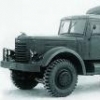-
Posts
7,868 -
Joined
-
Last visited
-
Days Won
77
Vladislav last won the day on July 8
Vladislav had the most liked content!


Vladislav replied to jervn4's topic in Exterior, Cab, Accessories and Detailing

Vladislav replied to Vladislav's topic in Antique and Classic Mack Trucks General Discussion

Vladislav replied to Vladislav's topic in Antique and Classic Mack Trucks General Discussion

Vladislav replied to Vladislav's topic in Antique and Classic Mack Trucks General Discussion

Vladislav replied to Vladislav's topic in Antique and Classic Mack Trucks General Discussion

Vladislav replied to Vladislav's topic in Antique and Classic Mack Trucks General Discussion
BigMackTrucks.com is a support forum for antique, classic and modern Mack Trucks! The forum is owned and maintained by Watt's Truck Center, Inc. an independent, full service Mack dealer. The forums are not affiliated with Mack Trucks, Inc.
Thank you for your support!